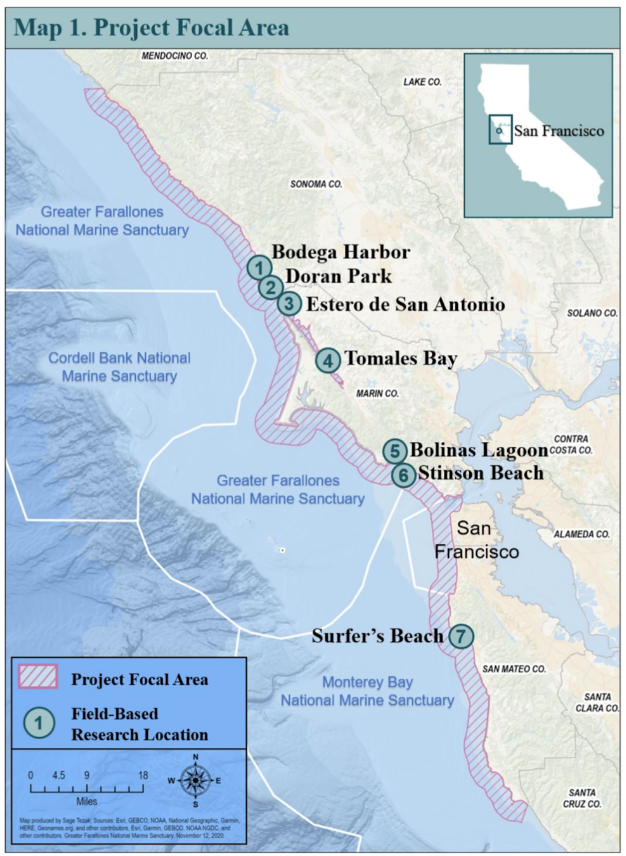We are advancing technical guidance to provide resource managers critical information to better prioritize and weigh trade offs among different coastal management strategies along 300 miles of the north-central California coast, with a focus on nature-based coastal protection projects.
Why We Care

California’s 1,200 miles of beaches and coastal wetlands are increasingly threatened by sea level rise and more frequent, intense storms, resulting in habitat loss and impacts to infrastructure from subsequent erosion and inundation. However, these habitats also have abundant potential to mitigate damage, build future climate resilience, and provide additional benefits through adaptation planning that prioritizes nature-based solutions. Nature-based solutions have been accepted conceptually in the state, but few projects have been implemented because the specific capabilities remain uncertain, and they require application across a patchwork of ownership and authority. As a result, nature-based solutions have been underutilized on California’s North-central coast, and the benefits contributed by ecosystems have largely been overlooked because they are not well understood and are therefore difficult to weigh in decision-making.
What We Are Doing
This project will provide foundational science and enable the agency collaboration necessary to address the regional-scale management challenges posed by sea level rise. By integrating field research with numerical modeling at key representative locations across 300 miles of the California coast, the project team will identify representative coastal habitats and management challenges in the region and quantify shoreline response to the impacts of sea level rise under different adaptation scenarios. The team will adapt the USGS CoSMoS model to predict the impact or benefit of multiple management scenarios (including natural and nature-based features, gray infrastructure, policy actions, or no action) for providing flood protective benefits to communities, infrastructure, and ecosystems. The team will also model the response of habitats to each scenario, providing a measure of the management impact to the overall ecological health of the coast. Working with stakeholders from 17 federal, state, and local agencies, the project team will ensure the project is directly applicable to decision making and will host a series of peer-to-peer workshops to support broader uptake of nature-based adaptation strategies.
Benefits of Our Work
The project will advance the state of nature-based solutions guidance available to coastal managers and planners statewide by informing the actions of 17 federal, state, and local agency members of the North-central California Coastal Sediment Committee. These agencies have formally committed to incorporating the products and guidance from this project into existing agency processes, encouraging their use, and distributing results state-wide. The project will inform restoration plans that will serve as local, state, and national models for nature-based solutions implementation. The project will also directly support transportation-focused stakeholders from Caltrans and partners to expand staff exposure to and knowledge of nature-based coastal adaptation strategies.
The project is led by Dr. Wendy Kordesch of the Greater Farallones Association (GFA) and Max Delaney of the Greater Farallones National Marine Sanctuary (GFNMS) and includes the following investigators: Sara Hutto and Sage Tezak of GFA; Maria Brown of GFNMS, Dr. Patrick Barnard, Dr. Daniel Hoover, and Dr. Maya Hayden of USGS; and, Dr. Kriss Neuman and Dr. Matthew Reiter of Point Blue Conservation Science.
This project is part of the NCCOS Effects of Sea Level Rise Program Program.
